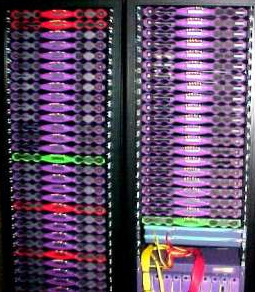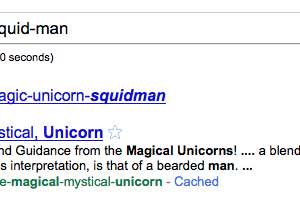SEM redefined: Search Engine Monkeying

We all want to believe we can get something for nothing (or close to nothing). It is reasonable to expect value when marketing online. Recently I have seen people believe they are getting a steal with their paid search traffic buys or link building buys. Paid search falls under search engine marketing (SEM) and link building falls under search engine optimization (SEO), but they are entirely separate concerns. The trend has increasingly been to outsource SEM/SEO grunt work to overseas vendors.¬† Caveat Emptor! While I cannot speak for all vendors, I will discuss a few specifics based on what I have seen…
The results for SEM look instant, which is exciting for a business owner. When the purchase of paid ads, banners, rollovers, etc. is legitimate, the results are definitely fast. However, one should research the credibility of the company they are looking to work with. Ask for references and specific examples of previous success. If a vendor is offering something that sounds too good to be true – it probably is! Mixing logic with a bit of skepticism is never a bad idea when determining where to spend marketing dollars.
Guess what I have discovered (some) SEM vendors are doing? Taking money to unleash many, many bots via server farms. If you have an untrained eye, it is easy to mistake people traffic with bot traffic. People traffic means real people are clicking on your pages. Bot traffic means that no humans are viewing your page, they are programs set to run, hit the page and subsequently eat up your bandwidth. There is no tangible SEM or SEO advantage to bot traffic.
Recently I heard the term “bot padding” when describing the practice of padding statistics with non-human traffic. While it sounds cute – what a fantastic waste of time and resources. If you are looking at your site’s analytics and the referring traffic is from random subdomains, you are the victim of search engine monkeying! There is no value to the bot traffic in this instance. Make no mistake, there is a monkey (bot) in the middle. I really wanted to make a highfalutin monkey vs. robot reference in there somewhere, but sadly it doesn’t fit…
There are legitimate uses for bots, they play a crucial part on the web. Bots do good work when it comes to crawling and indexing your page for SEO purposes, to automate trading functions, or to even chat with you. Know that annoying customer service box you type into to ask a question? Chances are it’s a bot! At least to start with they use bots, some services will eventually kick you to a real person.
I do think there are some good SEM deals right now, specifically on Facebook. There are many potential eyeballs viewing your ads for pennies on the dollar, but don’t expect traffic when going the CPM route… It’s the wild wild west yet again, just like it was with the Google content network a few years ago. My biggest problem with the Google content network when it came out was the lack of visibility. A search advertiser could be getting all sorts of traffic, but the traffic would be coming from 404 pages on “adult” sites or parked domain pages, etc. In the past few years Google has been really good at giving advertisers control with the various page types, domain names, etc. Without an accurate window into where you are spending money on ads, how do you measure?



